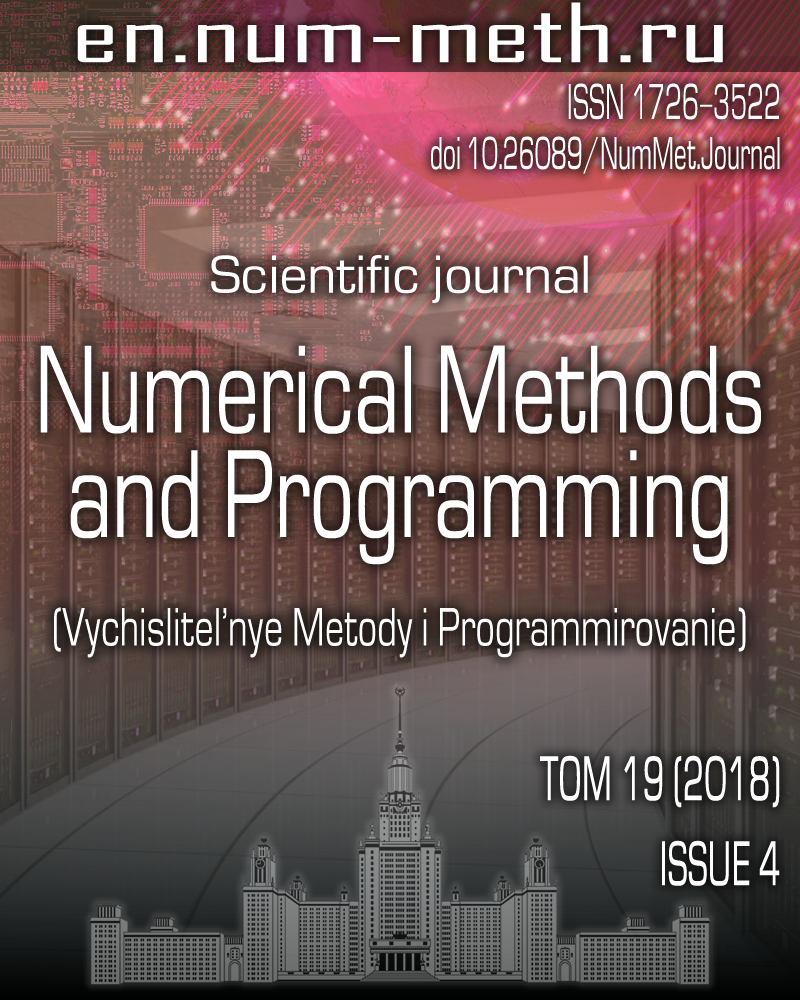DOI: https://doi.org/10.26089/NumMet.v19r433
Development of an agent-based demographic model of Russia and its supercomputer implementation
Keywords:
Abstract
The application of the agent-based modeling approach to the problem of natural human migration is considered. A demographic model of Russia is presented. This model takes into account the administrative division of Russia and simulates the processes of fertility, mortality and migration on the basis of modeling the behavior of individual members of the artificial society. In order to simulate the behavior of the artificial society as a whole, it is necessary to perform numerical experiments with the number of agents up to 109 and to use supercomputer technologies. In such experiments, an important problem is the implementation of an optimal automatic distribution of agents across the cluster processors. The application of model decomposition using the METIS algorithm with consideration of the main features of the agent model is shown. The obtained numerical results are discussed.
Published
Issue
Section
References
- V. L. Makarov, A. R. Bakhtizin, E. D. Sushko, and A. F. Ageeva, “Artificial Society and Real Demographic Processes,” Ekonomika Mat. Metody 53 (1), 3-18 (2017).
- G. Karypis, and V. Kumar, METIS: Unstructured Graph Partitioning and Sparse Matrix Ordering System. Version 2.0.
http://dm.kaist.ac.kr/kse625/resources/metis.pdf . Cited August 30, 2018. - W. F. Tinney and J. W. Walker, “Direct Solutions of Sparse Network Equations by Optimally Ordered Triangular Factorization,” Proc. IEEE 55 (11), 1801-1809 (1967).
- G. M. Amdahl, “Validity of the Single Processor Approach to Achieving Large Scale Computing Capabilities,” in AFIPS’67 Proc. Spring Joint Computer Conf., Atlantic City, USA, April 18-20, 1967 (ACM Press, New York, 1967), pp. 483-485.
- N. Collier, Repast HPC Manual.
http://repast.sourceforge.net/docs.php . Cited August 30, 2018. - M. Scheutz, P. Schermerhorn, R. Connaughton, and A. Dingler, SWAGES -An Extendable Distributed Experimentation System for Large-Scale Agent-Based Alife Simulations.
https://hrilab.tufts.edu/publications/scheutzetal06alifeswages.pdf . Cited August 30, 2018. - W. Tang and S. Wang, “HPABM: A Hierarchical Parallel Simulation Framework for Spatially-Explicit Agent-Based Models,” Transactions in GIS 13 (3), 315-333 (2009).
- J. Parker, A Flexible, Large-Scale, Distributed Agent Based Epidemic Model.
https://www.brookings.edu/wp-content/uploads/2016/06/12_epidemicmodel_parker.pdf . Cited August 30, 2018. - Z. Gong, W. Tang, D. A. Bennett, and J. C. Thill, “Parallel Agent-Based Simulation of Individual-Level Spatial Interactions within a Multicore Computing Environment,” Int. J. Geogr. Inf. Sci. 27 (6), 1152-1170 (2013).
License
Copyright (c) 2018 Вычислительные методы и программирование

This work is licensed under a Creative Commons Attribution 4.0 International License.

